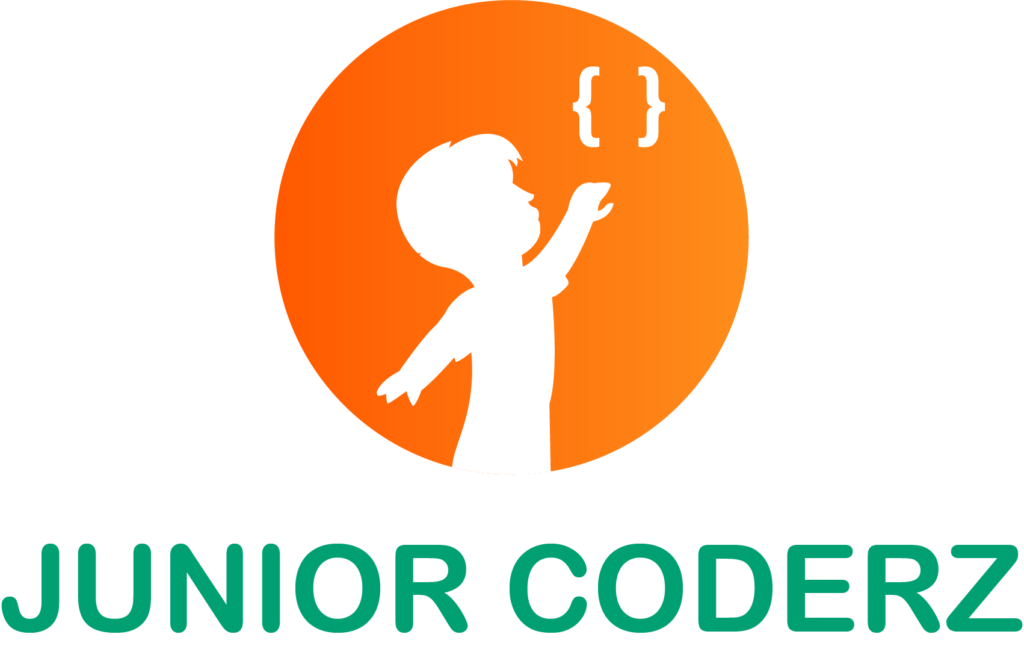Are you a curious young mind eager to dive into the world of coding? Wondering how to start with Python and turn your ideas into reality? You’re in the right place! Python is one of the most beginner-friendly programming languages, known for its simplicity and versatility. Whether you dream of creating games, automating tasks, or building websites, Python can be your gateway to the tech world.
But where do you begin? What exactly is a script in Python? and How hard is Python to learn? This comprehensive guide will answer all these questions and more, providing you with a roadmap to embark on your Python programming journey.
What is Python and Why Should You Learn It?
Python is a high-level, interpreted programming language created by Guido van Rossum in 1991. It’s designed to be easy to read and write, making it an excellent choice for beginners. Python’s syntax is clean and straightforward, resembling everyday English, which helps new programmers grasp concepts quickly.
Key Features of Python:
1. Simplicity
Python is renowned for its straightforward and readable syntax, which closely resembles the English language. This design philosophy minimizes the complexity often associated with programming, making it accessible to beginners and efficient for experienced developers. For instance, tasks that require multiple lines of code in other languages can often be accomplished with fewer lines in Python, enhancing productivity and reducing the likelihood of errors.
2. Versatility
Python’s adaptability allows it to be employed across various domains:
- Web Development: Frameworks like Django and Flask enable the creation of robust web applications.
- Data Analysis and Visualization: Libraries such as Pandas and Matplotlib facilitate data manipulation and graphical representation.
- Artificial Intelligence and Machine Learning: Tools like TensorFlow and scikit-learn support the development of intelligent systems.
- Scientific Computing: Modules like SciPy and NumPy are essential for complex scientific calculations.
This broad applicability makes Python a valuable skill in numerous industries.
3. Community Support
Python boasts a vast and active global community. This collective contributes to a wealth of resources, including extensive documentation, tutorials, and forums. Such support is invaluable for learners and professionals alike, offering assistance and fostering continuous learning.
4. Cross-Platform Compatibility
Python is inherently cross-platform, meaning that programs written on one operating system (e.g., Windows) can run seamlessly on others (e.g., macOS, Linux) without modification. This feature simplifies development and deployment processes, ensuring broader accessibility and flexibility.
How to Start with Python
Embarking on your Python journey involves several steps:
1. Install Python
Visit the official Python website at python.org and download the latest version compatible with your operating system. The installation process is straightforward, and the website provides detailed instructions.
2. Choose an Integrated Development Environment (IDE)
An IDE is a software application that provides comprehensive facilities to programmers for software development. For beginners, Thonny is highly recommended due to its simplicity and user-friendly interface. Other popular IDEs include PyCharm, Visual Studio Code, and Jupyter Notebook.
3. Write Your First Python Script
A script in Python is a file containing Python code that can be executed to perform a specific task. Here’s a simple example:
print(“Hello, World!”)
Save this code in a file with a .py extension, such as hello.py, and run it using your IDE or the command line.
Basics of Coding for Beginners
Embarking on your Python journey requires a solid grasp of its core components. These elements form the backbone of most Python programs and are essential for building more complex applications.
1. Variables and Data Types
Variables act as containers for storing data values. In Python, you don’t need to declare the type of a variable explicitly; the interpreter infers it based on the assigned value. This feature is known as dynamic typing.
Common Data Types:
- Integers (int): Whole numbers, e.g., 5, -3.
- Floating-point numbers (float): Decimal numbers, e.g., 3.14, -0.001.
- Strings (str): Sequences of characters, e.g., “Hello, World!”.
- Booleans (bool): Logical values, either True or False.
Example:
name = “Alice”
age = 12
is_student = True
In this example, name is a string, age is an integer, and is_student is a boolean.
2. Control Structures
Control structures manage the flow of a program, allowing it to make decisions and execute certain blocks of code based on conditions.
if, elif, and else Statements:
These statements evaluate conditions and execute code blocks accordingly.
Example:
if age < 13:
print(“You are a child.”)
elif age < 18:
print(“You are a teenager.”)
else:
print(“You are an adult.”)
In this example, the program checks the value of age and prints a message based on the condition that evaluates to True.
3. Loops
Loops allow you to execute a block of code multiple times, which is especially useful when working with sequences or when repetitive tasks are needed.
for Loop:
Iterates over a sequence (like a list, tuple, or range).
Example:
for i in range(5):
print(i)
This loop will print numbers from 0 to 4.
while Loop:
Continues to execute as long as a specified condition is True.
Example:
count = 0
while count < 5:
print(count)
count += 1
This loop will also print numbers from 0 to 4.
4. Functions
Functions are reusable blocks of code that perform a specific task. They help in organizing code, making it more readable and maintainable.
Defining a Function:
Use the def keyword followed by the function name and parentheses.
Example:
def greet(name):
print(f”Hello, {name}!”)
greet(“Alice”)
In this example, the function greet takes a parameter name and prints a greeting message.
How Hard Is Python to Learn?
Python is often lauded as one of the most beginner-friendly programming languages. Its clean syntax and readability make it an excellent choice for newcomers to learn how to start with python programming. However, the learning experience can vary based on individual backgrounds and learning approaches.
Factors Influencing the Learning Curve
- Prior Programming Experience: If you have experience with other programming languages, you’ll likely find Python’s syntax and structure more approachable. For absolute beginners, the challenge lies not just in learning Python but in grasping fundamental programming concepts.
- Learning Approach: Engaging with interactive tutorials, building small projects, and consistent practice can significantly enhance the learning process. Conversely, relying solely on passive learning methods might slow down progress.
- Understanding Programming Concepts: Beyond syntax, understanding concepts like variables, loops, and functions is crucial. These foundational elements are common across many programming languages and are essential for effective coding.
Common Challenges and How to Overcome Them to start with Python
- Syntax Errors: Python’s strict indentation rules can be a source of frustration for beginners. Using code editors that highlight syntax errors can help in identifying and correcting these issues promptly.
- Debugging: Learning to read error messages and using debugging tools can aid in understanding and fixing issues in your code.
- Overwhelm from Advanced Topics: It’s easy to get overwhelmed by the vastness of Python’s libraries and frameworks. Focusing on core concepts before diving into advanced topics can provide a solid foundation.
Tips for a Smooth Learning Journey
- Set Clear Goals: Determine what you want to achieve with Python, whether it’s web development, data analysis, or automation.
- Practice Regularly: Consistent practice helps reinforce concepts and improve problem-solving skills.
- Engage with the Community: Joining forums, attending workshops, or participating in coding challenges can provide support and motivation.
- Build Projects: Applying what you’ve learned by building small projects can enhance understanding and provide a sense of accomplishment.
Python Project Examples

Applying your knowledge through projects solidifies your understanding to know how to start with python. Here are some beginner-friendly Python project ideas:
1. Number Guessing Game
Create a game where the computer selects a random number, and the player tries to guess it.
2. To-Do List Application
Develop a simple app to manage daily tasks, allowing users to add, view, and delete items.
3. Calculator
Build a basic calculator that performs arithmetic operations like addition, subtraction, multiplication, and division.
4. Dice Rolling Simulator
Simulate rolling dice, generating random numbers between 1 and 6.
5. Rock, Paper, Scissors Game
Implement the classic game where the user plays against the computer.
Conclusion
Embarking on your Python programming journey is an exciting endeavor. By understanding the basics, practicing regularly, and engaging in projects, you’ll develop a strong foundation to know how to start with python. Remember, the key to success is consistency and curiosity.
At juniorcoderz.com, we’re dedicated to supporting young programmers like you. Explore our resources, join our course Best Python Programming Course for Beginners, and take the next step in your coding adventure.
FAQs
Q1: What is a script in Python?
A script in Python is a file containing Python code that can be executed to perform a specific task or set of tasks.
Q2: How hard is Python to learn for beginners?
Python is considered one of the easiest programming languages to learn due to its simple syntax and readability.
Q3: What are the basics of coding for beginners in Python?
Basics include understanding variables, data types, control structures (like loops and conditionals), functions, and error handling.
Q4: Can you provide some Python project examples for beginners?
Yes, projects like a number guessing game, to-do list app, calculator, dice rolling simulator, and rock-paper-scissors game are great for beginners.

